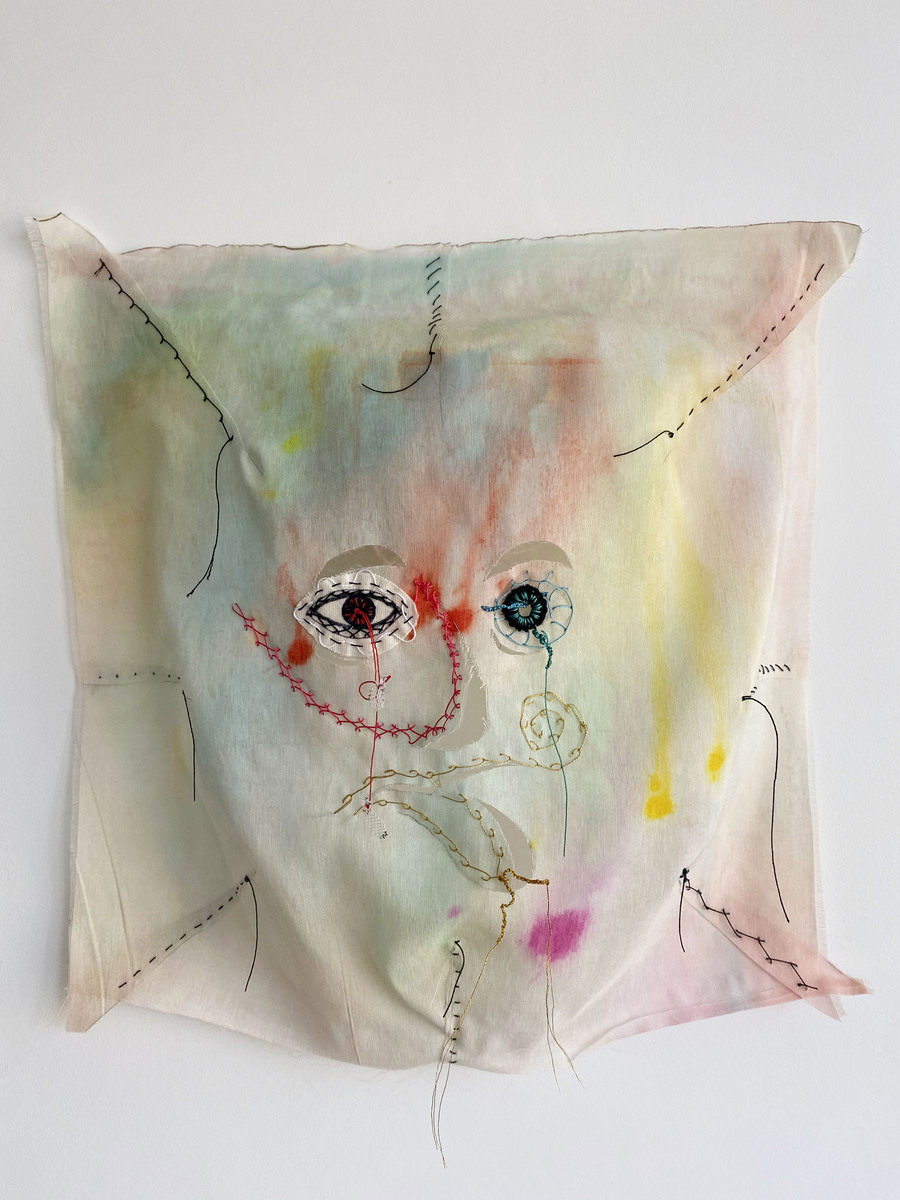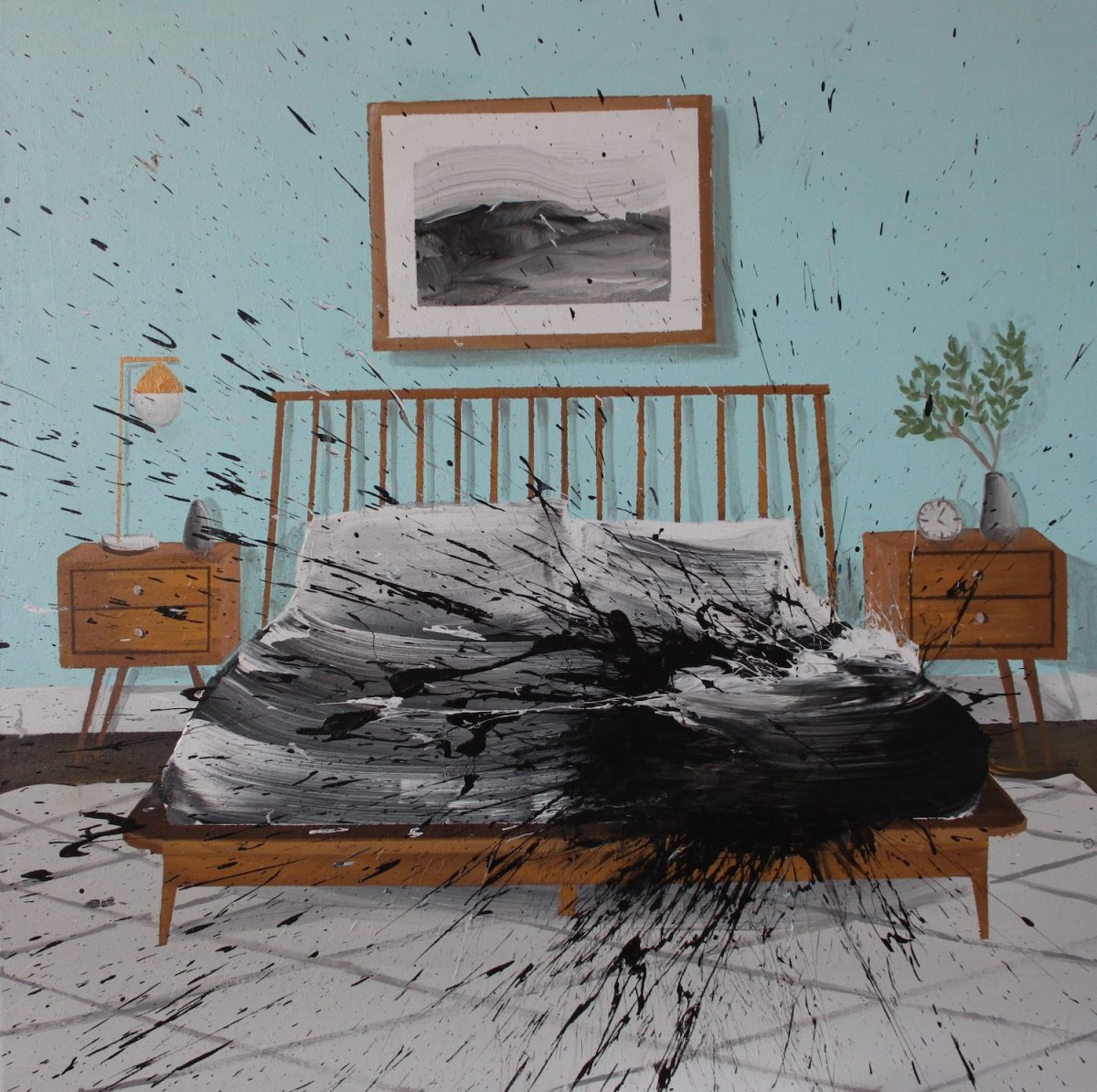ARTWORKS

The Sinistry
Art Imitating Life: Cairo as seen through Hany Rashed’s eyes

Hany Rashed lives and works in Cairo, Egypt, where he was born in 1975. His artistic practice is centred around periodically redefining himself through different media, including painting, sculpture, collage, monotype and installation. He is interested in finding a way to work with any medium, to express ideas that come to him in the process of discovery of each new technique. Much of his work reflects his personal experiences, often connected to social and political topics around humanity, transformation and conflict.
Rashed came to art via a heartbreaking personal tragedy, the loss of his one-year-old sister to a severe allergy. The anguish and depression following this event led him to drawing – as a way to find solace and as a means of communication with his departed sister. His art became both a poignant expression of his grief and a way of finding justice against the shortcomings of a public hospital that had failed her.

His interest in approaching tasks from a practical perspective started early. He enjoyed applying himself and “using his hands” to tackle various challenges. A job as a sound technician at Cairo’s Maspero building (HQ of Egypt’s state-run television and radio organisation) highlighted the contrast between routine and the ever-evolving nature of art. It spurred him to view his creative process as a departure from the mundane, and to embrace the unpredictable and transformative nature of artistic exploration.
Rashed’s work focuses on the human condition, exploring such themes as transformation, foreignness, labour, and social upheaval – from revolutions in Egypt to the impact of the Covid-19 pandemic. For example, in his series 90 days in the studio (2020) he experimented with layers of opposites: motion and stillness, violence and submission. After being confined to a room during lockdown, he seeked to explore a parallel dimension where these opposites exist simultaneously.The viewer’s relationship to space becomes distorted as all the experiences that don’t usually go together are combined in one picture plane, bringing a sense of the unfamiliar and the surreal.
This approach, creating layers of meaning and spinning familiar concepts in a new way, extends across all his output.


Rashed’s creative process begins with extensive research, emphasising the importance of the visual (images, videos, movies, anything he sees) over the theoretical. Visiting different places and countries, personal experiencines – all are key to his practice. Much of this comes from his interest in observing people, their appearance and how they adapt and change according to the social situation. He then seeks to portray his ’diagnosis’ of what he’s observed, in an almost medical way. The transitory nature of experience is what fuels Rashed’s practice.
It is not only the people who inspire his reflections. As he says, the place itself often dictates the direction of his research: “This is my personality – I let the place influence me.” To illustrate this process, he describes visiting Florence, Italy, where he immersed himself in another world, that of the Renaissance. When he left, he also left the Renaissance – which meant he was not interested in work from the period elsewhere (for example, Renaissance paintings in the Louvre in Paris). “The moment has ended,” he says. The continuous search for new experiences and feelings is an integral part of his artistic journey.
Rashed’s unusual approach involves allowing his chosen medium to guide his ideas, underscoring the symbiotic relationship between form and content in his work. He meticulously documents every step, to build a foundation for the emerging creative idea. “The technique is what brings me the idea, makes me focus on it. It is a tool to reach the idea.”
He stresses the importance of changing his medium from series to series. He argues that if the medium stayed the same, all the works would be very similar, both visually and conceptually. By adopting new media and learning new techniques, he is able to discover new ideas, meaning that he can keep reinventing himself as an artist.
In terms of direct artistic inspiration, he highlights history, ancient civilisations and certain periods of art history, especially the Renaissance. Living and working in Egypt, much of his explorations relate to his home country. Also of great importance is Rashed’s teacher and mentor, the Egyptian artist Mohamed Abla. He was the one to introduce Rashed to the idea of switching media, teaching him painting and sculpture among other practices. Although Rashed stresses that Abla has not influenced the conceptual element of his creative output, the way of approaching the work, the observation and the technicalities of each medium were key to his teaching.
Rashed remains committed to pushing the boundaries of his creativity. Highlighting the cyclical and ever-changing nature of his artistic process, he hopes to soon return to painting after a hiatus since 2020.
